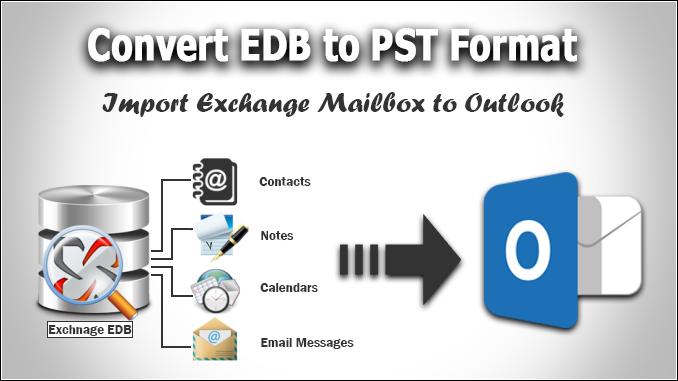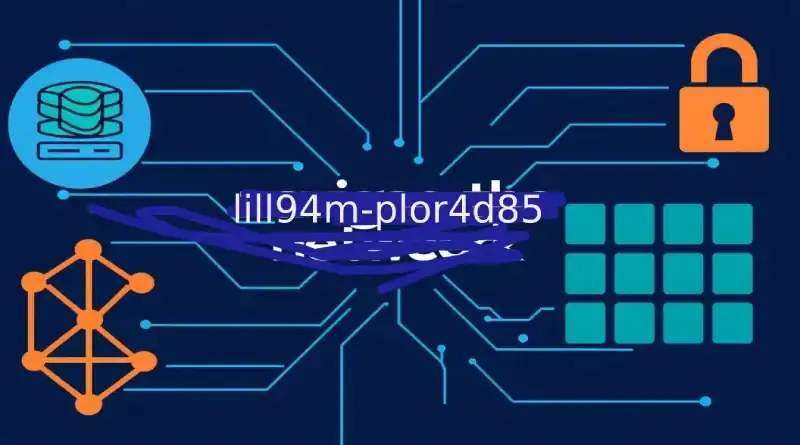Microsoft Exchange Server is an essential mail server used by organizations to manage their day-to-day emails as well as other administrative activities. All Exchange mailboxes as well as items like calendars, contacts, emails and notes are saved in EDB format. This means that EDB files are essential to the functioning of Exchange EDB files are vital to the proper functioning for the servers.

However it is true that the Exchange database is often corrupted due to a variety of reasons, including viruses and hard drive malfunctions, shutdown issues or system malfunctions. While it’s not common but it could cause damage to your Exchange database, rendering mailboxes un-accessible. So, the EDB file should be repaired as soon as possible, or remove the Exchange Database from EDB file.
In this article we’ll discuss the manual and automated ways to extract Exchange mailbox data out of EDB files. But before we do that, let’s take a look at these details to better understand the reasons to remove Exchange mailboxes out of EDB files.
The reason to remove Exchange Mailboxes from EDB
- Access mailbox contents from an the database file that is either dismounted or abandoned.
- To access shared, archive or public folders, you must separate them from your the primary mailbox.
- Transfer individual mailboxes onto a new databases as well as Exchange Server.
- Accessing EDB files not connecting Exchange Server
- To access information when the Exchange database is not mounted.
- The log file on the system is deleted
In these scenarios ,it is vital to remove exchange mailboxes from EDB file. Here are a few of the most efficient ways to extract exchange database information from EDB files.
Methods to extract Exchange Mailboxes from EDB File
There are generally three methods that can be used to manually extract Exchange mailboxes from the EDB file. In this article, we will speak about all three methods.
The first method is ExMerge Utility from Microsoft
ExMerge, also known as the Microsoft Exchange Server Mailbox Merge Wizard is a tool that extracts mailbox information from an Exchange Server’s mailbox before merging it with another mailbox that runs on another Exchange Server. The data is copied from the mailbox in separate PST file, and then merges the mailbox data.
ExMerge works on single and multiple mailboxes and it’s smart enough to filter mailbox content based on a variety of parameters. It will scan the folders for duplicate items , and remove them.
Its user-friendly interface, this software is similar to a wizard’s and presents a range of choices on one screen. Here’s the procedure:
- The first screen displays two choices. Select the first choice. Extract information directly from the Exchange Server Mailbox.
- Enter your Exchange Server Name and then click Next.
- This Data Selection Criteria page offers beneficial filters for the entire data. The tabs that filter data include Data, Import Procedure and Folders, Dates and Information about Messages. Within each tab, there are a variety of options to filter the information. Click Apply to start the process.
Limitations of the ExMerge tool
- The tool is unable to transfer PST files larger than 2GB in size.
- It skips the corrupted email message that is in the file.
- Unicode PST files aren’t recovered using ExMerge. ExMerge tool.
- The older versions of ExMerge are not compatible with non-email features like calendars, contacts notes, journals, tasks etc.
Method 2 : Using Microsoft Exchange Management Shell
It’s another method of extracting Exchange mailboxes out of EDB files. By using Exchange Management Shell, you can convert EDB file into PST within Exchange Server 2007 and later versions. EMS utilizes PowerShell commands to make it easy to transform EDB files in PST. In this article, we will show you how to convert EDB file into PST within Exchange Server 2016.
Go to Exchange Management Shell and use PowerShell cmdlet “New-MailboxExportRequest.” Use the below syntax for PowerShell cmdlets.
“New-MailboxExportRequest -Mailbox” -“FilePath”
Use the name of the mailbox you wish to extract, and then enter the exact place where you’d like to extract the EDB file. For instance,
Exchange Management Shell works as an EDB Extractor and lets you store it in PST. However, there are some limitations like:
- It is a must to have a solid understanding of EMS cmdlets
- It is impossible to recover mailboxes after corrupt the EDB file
- The mailbox has to be mounted on the Exchange Server
Method 3 – Utilizing an Exchange Administration Center. Exchange Admin Center
Both the ExMerge tool and the EMS PowerShell cmdlets have some disadvantages, for instance, they can only be used with Exchange 2003, has a long procedure and so on. In order to beat the limitations, there’s another method of transferring EDB files into PST using an alternative to the Exchange Admin Center.
This method is only able in order to remove Exchange mailboxes off of EDB for more recent Exchange versions such as Exchange Server 2013, 2016, and 2019. Follow the steps below to learn what you can do to get the EDB files using the Exchange administrator center.
- Open Exchange Admin Center. Go through the recipients and choose mailboxes. The list of mailboxes you have selected will be displayed on the screen.
- Right-click the mailbox you wish to convert to PST
- When you export to PST dialog box will show in the display. Browse and select the desired mailbox using the option you want and select the next button..
- Choose the location you’d like to save your Exchange mailbox and press next to proceed.
- The next step is to make sure to check the box for email notifications, enter the address of the mailbox you wish to be notified of mailbox notifications, and click to close.
The mailboxes have been transferred into the desired location. After the export process is completed, you will receive a confirmation email within the designated PST mailbox. However, there are some disadvantages when using Exchange Admin Center to extract EDB file into PST that include:
- You require administrative rights to carry out this procedure.
- It cannot retrieve corrupted mailbox information
- It is not possible to perform this on older versions of Exchange
Given the many limitations on manual methods, many users find themselves confused as to the best way to extract EDB files into PST. There is an automated solution to your conversion.
An alternative tool to Extract Exchange data into PST with the latest Exchange Version
It is an important application that allows users to extract Exchange information from EDB files and convert them to PST. In addition, it comes with a variety of fantastic options that let users extract EDB into PST in accordance with particular specifications.
Conclusion
Extracting Exchange mailbox information in EDB files is vital for businesses. Since it helps to protect their Exchange data from all kinds of loss. Furthermore, extracting EDB files to PST permits users to transfer EDB mailboxes into Office 365 or keep the PST file for backup. However, there are limitations with manual methods. Therefore, it is recommended to use a software that allows users to convert EDB file into PST.





